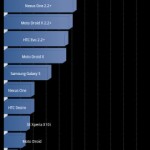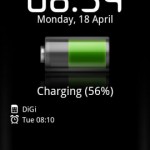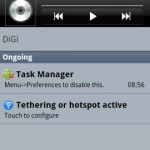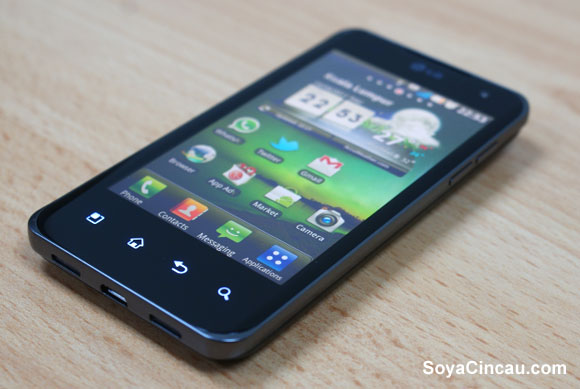
The LG Optimus 2X, which also happens to be the first dual-core Android device was recently launched in Malaysia. Offered as low as RM878 via Celcom, the Optimus 2X is an attractive Android smart phone our market being the first with a dual-core processor. Just recently, we were given the opportunity to test out the Optimus 2X for a short period of time and here’s our findings.
To recap on the key specs, the Optimus 2X is powered by Nvidia’s Tegra 2 processor which runs on dual-core at 1GHz and 512MB of RAM. At the front, it has a modest 4” TFT LCD capacitive screen which does 800×480 pixels. The moment we picked this phone, we noticed a familiar feel with the Galaxy S which isn’t surprising as both are very identical in dimensions with the LG Optimus 2X being 123.9mm (H) x 63.2mm (W) x 10.9mm (D) and Samsung Galaxy S with 122.4mm (H), 64.2mm (W) x 9.9mm (D).
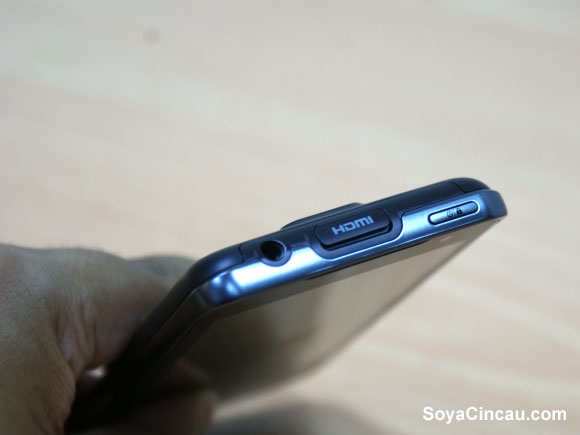
At the top, you’ll find a power/screen lock button, HDMI port and 3.5mm audio jack while the volume rocker is located on the right. The physical buttons on the Optimus 2X is rather flush with the body but it isn’t hard to locate in our day to day use. The only gripe we had if we’re forced to pick one would the lack of LED indiciator on the device, which is a similar situation on the Galaxy S. If you missed a call or notification, you won’t know until you switched on the screen. Not that this hampers anything but a tiny LED indicator would been a nice touch. At the bottom, you’ll find dual speakers which is rather decent but when it comes to landscape gaming, it tends to get covered by your palm depending on how you hold it.
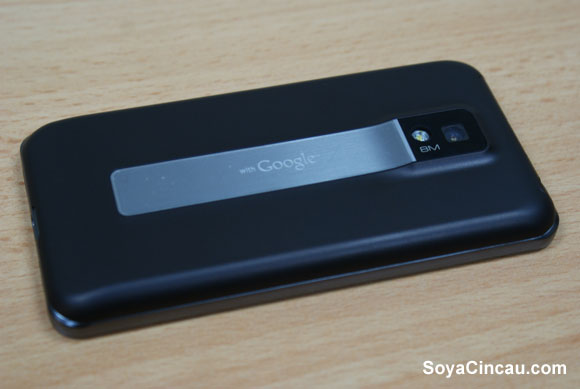
At the back, it has a simple surface with a strip of metal smack in the centre with “Google” inscribed which goes upwards with a slight bulge housing the 8MP camera and LED flash. When opened, the back cover does look flimsy but it feels decently solid to hold when assembled. The front of the Optimus 2X is said to be made of Gorilla glass which gives you some form of protection against moderate abuses and you’ll get a 1.3MP front facing camera and light sensor located at the top. For shortcuts/navigation, the Optimus 2X went with capacitive buttons which was rather responsive but personally we preferred physical buttons for less accidental presses. The overall design for the front is sleek and subtle at the same time with smooth beveled edges on the sides. This is a rather simple and safe design probably won’t make heads turn when used in public. While most android devices launched this month are running Android 2.3 Gingerbread, the Optimus 2X that we had was still running on Android 2.2 Froyo.
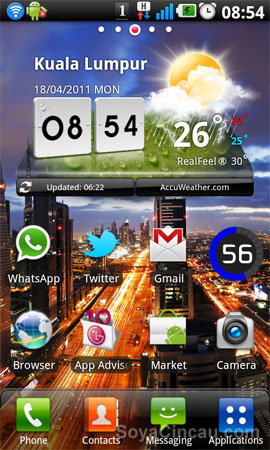
When using the device, one of the first things that caught our attention was the user interface on the Optimus 2X. At first glance it really does look like a mash up between Samsung & HTC UIs. The familiar looking clock/weather widget and toggle between home screens looks derived from Sense UI while the rest including notification bar toggle switches, icons, dialing and app browsing interface looking a lot like TouchWiz. The core apps like phone dialer and messaging are clear and easy to use without much fuss.
Despite not using any Super LCD or Super AMOLED for the screen, the display is surprisingly vibrant. From what we understand, the Optimus 2X screen is of IPS variety which is similarly used by Apple with their iPhones. We can’t say it is as good as the iPhone 4 but the display of the Optimus 2X is pretty close to Super AMOLED screens we’ve seen to date.
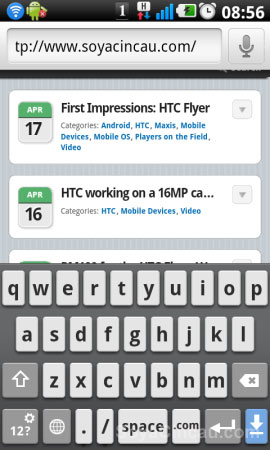
Typing on the Optimus 2X was quite a disappointment. When we first saw the default LG keyboard, it looks like an iOS keyboard that you’ll get from an iPhone device. However typing on it doesn’t feel the same. We’re not sure if it takes some getting used to but it doesn’t feel as accurate or as smooth compared to default keyboards we’ve tried on most Android devices. In the end, we ditched the keyboard for swype which turned out to be a lot better.
So how does the dual-core perform? When we booted it up for the first time, it loads pretty decent but we didn’t get any exhilarating feel of doubled performance. During the initial set up which includes setting Google account, mail, twitter, contacts and so on, we noticed some lags with several short pauses in between. When this happens, even typing was lagged that even our typed words showed up a second later followed by rapid typing effect. However after we rebooted, everything appears to be running smoothly. The lag could just be an isolated issue with initial set up when syncing our personal items from the net.
When running multiple apps, the Optimus 2X performs impressively well and toggling between apps was a breeze. Web browsing is smooth but really you can’t feel much difference compared to other 1GHz android smart phones today. In Photo Gallery however, we felt that photo thumbnails load instantly even when they are taken mostly in larger 8MP format. We swipe through pages of photos and the thumbnails just appear instantly. This is where most android device tends to struggle but the Optimus 2X was noticeably faster.
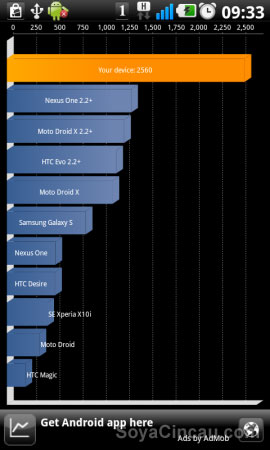
To show its dual-core performance, we decided to run several benchmarks and see if the numbers will tell us a better story. As expected, the Optimus 2X fare greatly in Quadrant returning 2560 score almost double of the referenced Nexus One 2.2 score, demonstrating it dual core prowess.
For mobile photography, the 8MP camera was better than average but the software could have been better. To snap a pic in auto focus mode, you would need to press and hold the shutter button and release it when your subject comes to focus. One complaint is that if you need to take quick shots repeatedly, the switch from preview to camera mode took quite some time and this is more apparent if you’re taking full 8MP shots.
From the sample pictures below, the LG Optimus 2X is capable of taking decent macro shots. Overall the details are adequate but colours tend to look slightly washed out. Another unique feature of the Optimus is its full 1080p HD video capabilities. The 1080p HD videos which are saved in 3gp format at 1920×1088 resolution looks decently clear. However looking at the details, it doesn’t really seems to be native 1080p which is more or less the same as the level of 720p HD videos of recent smart phones. While recording, the focus of the video is fixed throughout but you can zoom in/out with the volume rocker.
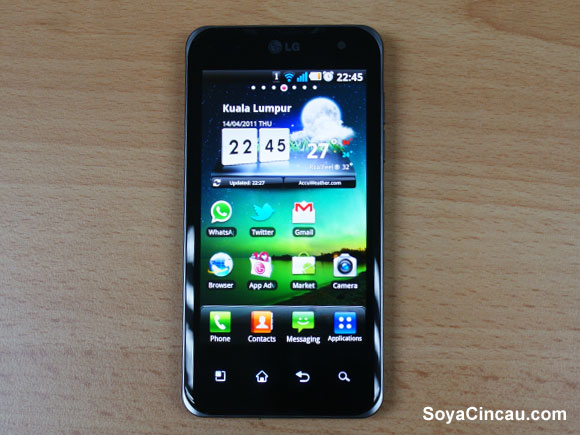
Having played the Optimus 2X for couple of days, the 1500mAh gave us about 10-12 hours of mixed use which is roughly the same as the Galaxy S we tried out earlier. For moderate users, it may just last a full day of use.
Overall, it is a decent device and for outright price of RM1899 and from RM878 on contract with Celcom, the LG Optimus 2X is tremendously great value for money. You have a latest Android device in terms of hardware but the only drawback is the software especially the OS version. Being dual-core, the Optimus 2X is considered ready to handle newer heavy duty apps. However from our experience, do not expect exhilarating speeds as normal apps tend to run just as fast as today’s latest single core smart phones.
Perhaps if LG releases its Android 2.3 Gingerbread update along with more apps that can take advantage of dual-core processing, we will then see its full potential. So far there wasn’t been any news on the upgrade and hopefully they will be as pro-active as HTC in terms of OS updates.
More pics of the Optimus 2X in the gallery below.


























